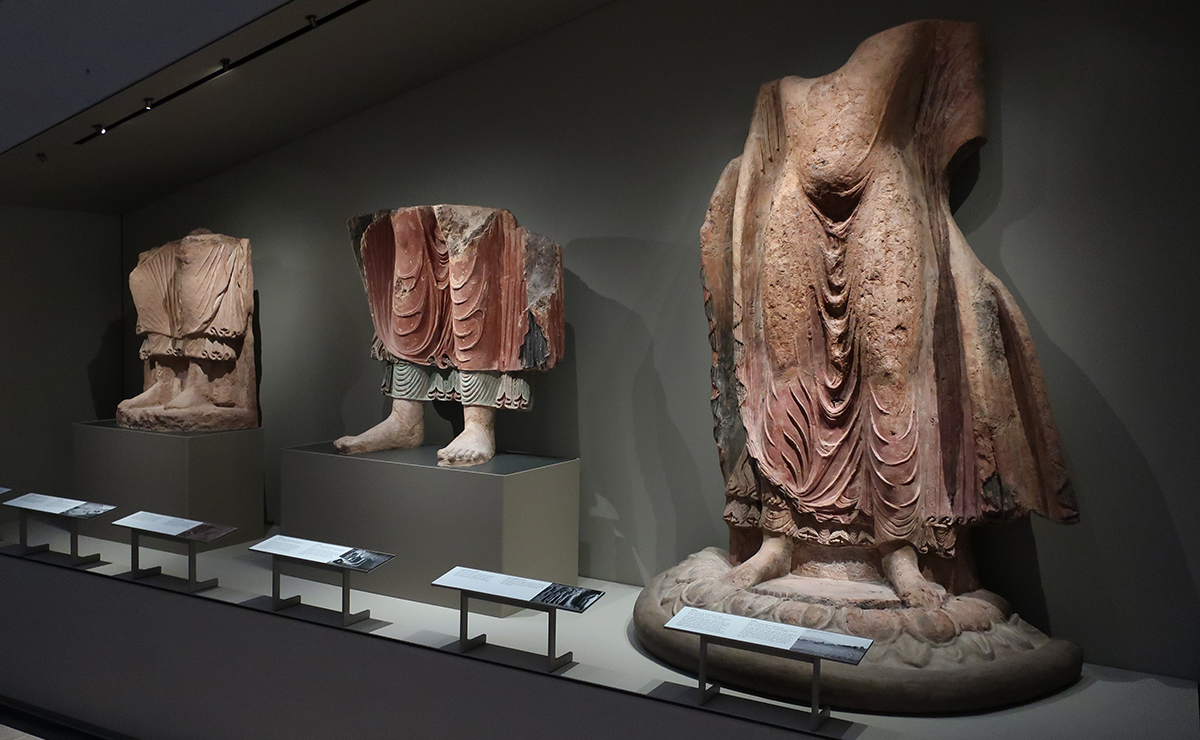
to top

Thesis Topic
The dissertation focuses on the clay-based sculptural production from the predominantly Buddhist archaeological sites in the northwest of China (Xinjiang Uyghur Autonomous Region).
Along the northern and southern edges of the Taklamakan Desert, a flourishing Buddhist culture developed between the 3rd to the 11th centuries CE. The archaeological remains, mostly rock-cut and surface architecture made of clay, rediscovered and explored in the course of international »research expeditions« at the beginning of the 20th century, led to the transfer of a large number of art and cultural objects, such as wall paintings, sculptures, manuscripts, everyday objects and painting fragments on silk, cotton and paper to various collections worldwide. The Museum für Asiatische Kunst in Berlin has one of the largest collections of artifacts from various sites along the important nodes of the northern Tarim, brought to Berlin by the so-called Turfan Expeditions (1902-1914), named after the modern city of Turfan (Turpan). With almost 400 clay-based sculptural fragments, Berlin offers the unique opportunity to perform systematic studies on these archaeological finds and access to a material culture which is almost lost in-situ. This loss can be explained both by anthropogenic factors and the typical weathering properties of clay.
The huge amount of physical sources therefore, as well as the archival materials of the expeditions (Turfan Archive), including an extensive historical photographic collection, provide the fellow with unprecedented access to the previously almost unexplored material with regard to the research of clay based-sculptures. Some of them are life-size and bear witness to the once grand appearance of the now lost architectural complexes, in which the sculptures played a central role in creating the spatial composition. The methodological approach, namely investigating the materials and technical aspects in the production of clay-based sculptures, can lead to a better understanding of the historical networks and cultural contexts. The development of a database as part of this dissertation, which is based on different classification criteria, allows access to every object and its associated data records. By considering the material itself as an important source of information, local patterns within local workshops can be identified and compared, so that transregional connections regarding the production of these sculptures can be explored based on the method of Historical Network Research. This cluster analysis will improve our understanding of processes, such as transfer, transmission and the interaction of artisan knowledge along the ancient Silk Roads of Central Asia. It aims to shed light on the spread of Buddhism in Central Asia and demonstrates, through artistic creations, the fusion of diverse regions and cultures that occurred and formed the foundation for traditional Chinese art. Especially through the sculptures, it can be exemplified how the figures were modified as Buddhism encountered local cultural factors. Buddhism and its art were thus involved in a complex interaction and always intertwined with the local culture, which itself was constantly on its own path of growth and change.
This research should lead to the following results:
(1) a comprehensive catalogue of the relevant sculptural material;
(2) the study of the material, technical, stylistic and iconographic aspects of the clay sculptures, aimed to shed light on the aesthetical influences which underlie this production;
(3) a better understanding of the historical and cultural contexts of this production.
